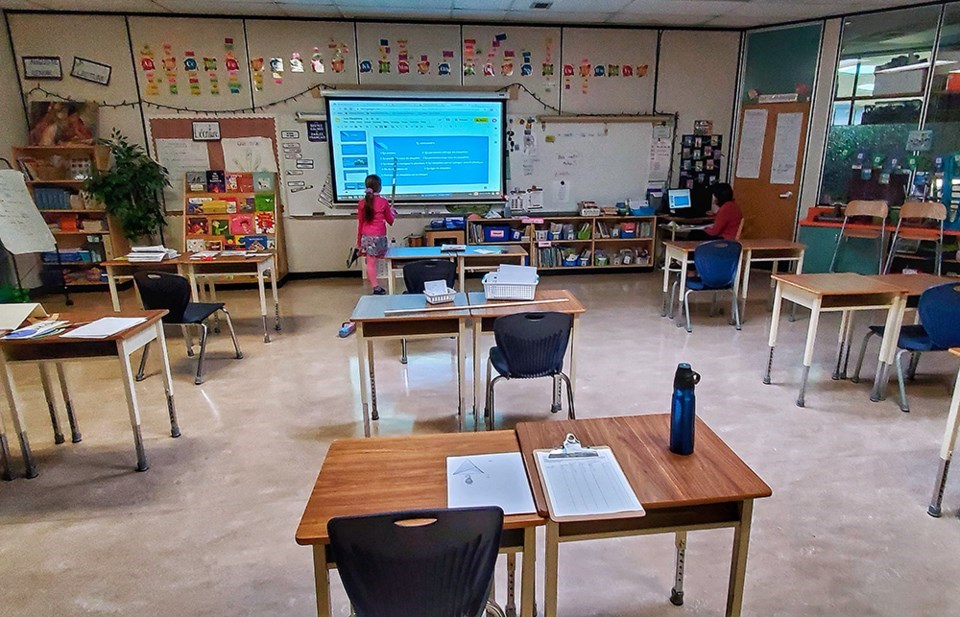MOOSE JAW — A new report suggests Prairie South School Division would be better off if the provincial government did not include classroom size and complexity issues in a new collective bargaining agreement (CBA) with teachers.
Division administration presented a report during the recent board meeting comparing Prairie South’s staffing ratios, classroom sizes, complexities, and other relevant data to provinces — British Columbia, Ontario, Prince Edward Island and New Brunswick — that have entrenched these factors into their educational CBAs, after a trustee requested the information.
Some data shows that Prairie South:
- Has a pupil-teacher ratio (PTR) equal to or lower than other provinces; for example, its PTR for kindergarten to Grade 3 is 20:1 and its urban PTR from grades 4 to 12 is 25:1, while the four other provinces are higher
- Directs 10 per cent of teachers’ time to classroom preparation, while in B.C., it’s 7.7 per cent and New Brunswick offers 35 minutes per day
- Has a minimum staffing requirement of five full-time equivalent (FTE) positions, which particularly affects Mankota, Eyebrow and Chaplin
- Has a PTR of 10:1 when providing intensive supports, whereas it’s 14:1 in Prince Edward Island
- Has a student support team ratio of 300:1, compared to B.C.'s 342:1 and PEI's 500:1
“What is really interesting with Prairie South compared to these other jurisdictions is that we’re doing quite well. That’s obvious,” trustee Patrick Boyle said.
“What this (data) really says is, when you’re looking at the provincial landscape today, if there was a collective agreement where a number of these items were mandated — and they were higher than Prairie South’s level — we would see a net negative impact to our school division,” he continued.
The reality is places like Regina and Saskatoon have higher PTR values and could use that data to dictate what goes into the CBA, Boyle said. This would negatively affect Prairie South and its smaller rural schools, while the division could also lose staff because it wouldn’t have the funding to meet the higher PTR values.
“People should read this report because it tells quite a different story than what’s been shared publicly … ,” he added. “I would be very disappointed if (these higher PTR values) made it into a provincially mandated agreement.”
There are not many decisions from Regina or Saskatoon that would be good for Mankota, which is why there are rural trustees who live in those communities and understand their needs and complexities, said trustee Shawn Davidson.
Saskatchewan is a large and diverse place, while the needs of rural schools are much different from urban schools, he continued. This is one reason why there are regional educational governance models, something school divisions fought for several years ago, he continued.
“If you look at some of these things like mandated class size, well … a school that’s got 50 kids suddenly becomes really challenging to try to figure out how to adequately staff and support those types of schools that are important to us,” Davidson said, adding such mandates could also affect rural bus ride times.
Ryan Boughen, director of education, commended the board for staying focused on supporting classrooms — which the data showed — since those efforts made Prairie South a great place to be.
Furthermore, he didn’t think the public knew just how much the board prioritized classrooms and directed sufficient resources to those areas.
“That’s a wonderful priority to have,” Boughen added. “That’s what we’re all about (and) that’s our business.”
Board chairwoman Giselle Wilson said that British Columbia should “take a page out of Prairie South’s playbook” with its classroom size and complexity issues.
In looking at the report, she thought the division was doing OK compared to other jurisdictions. While PSSD wasn’t perfect and would never reach perfection, it was holding its own.
The next PSSD board meeting is Wednesday, June 5.




